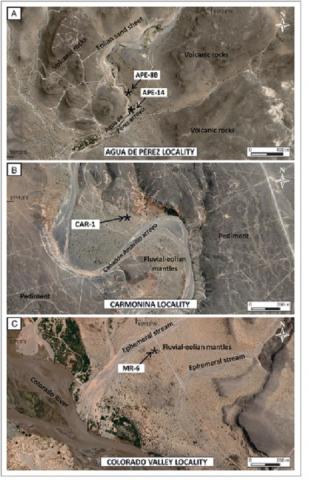Alfonsina Tripaldi, Marcelo A. Zárate, Gustavo A. Neme, Adolfo F. Gil, Miguel Giardina, M. Laura Salgán
2 017
Geoarchaeology, 30 July 2017
The Cañadón Amarillo area in northwestern Patagonia (Mendoza Province, Argentina) presents a rich archaeological record contained within thick successions of fine-grained deposits with well-constrained chronological and stratigraphic resolution. Geomorphological, sedimentological, and archaeological analysis of three archaeological localities, constrained by radiocarbon ages, was conducted to reconstruct site formation processes and depositional variability in an exposed, dryland setting. The archaeological sites are located in the Cañadón Amarillo area between the southern margin of the volcanic Payunia Plateau and the Colorado River, in an area of ephemeral streams and eolian sand sheets. The archaeological remains are preferentially contained in fine to very fine sand to silty sand deposits associated with the ephemeral streams. Low-energy fluvial deposition related to overbank flows, and eolian aggradation associated with coppice dunes, sand shadows, and unrippled and partially vegetated mantles have favored preservation of in situ archaeological materials. Our investigations provide insight into site formation processes in exposed settings within the semiarid parts of northwestern Patagonia and extend the local record of human occupation to ∼7300 14C yr B.P.

